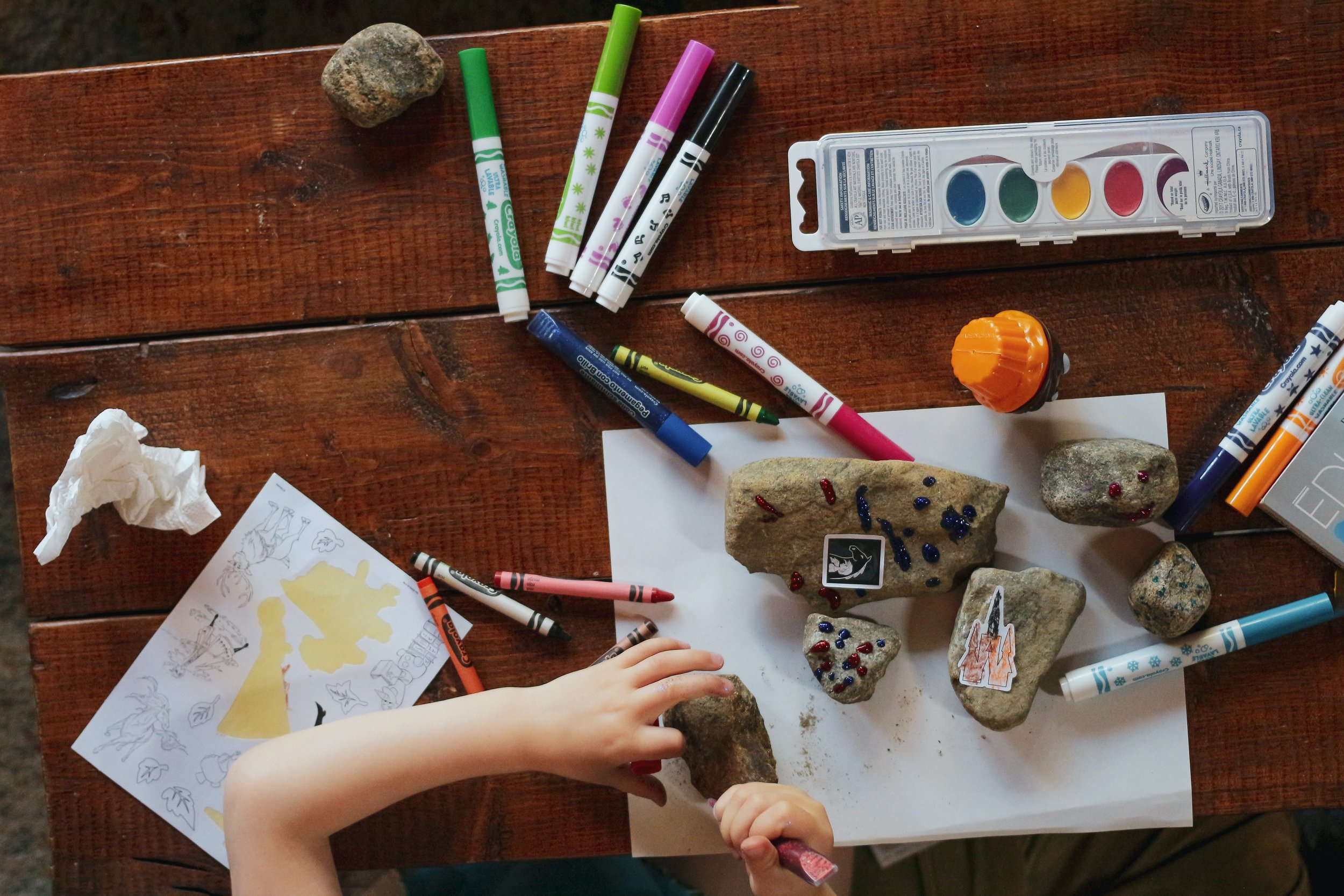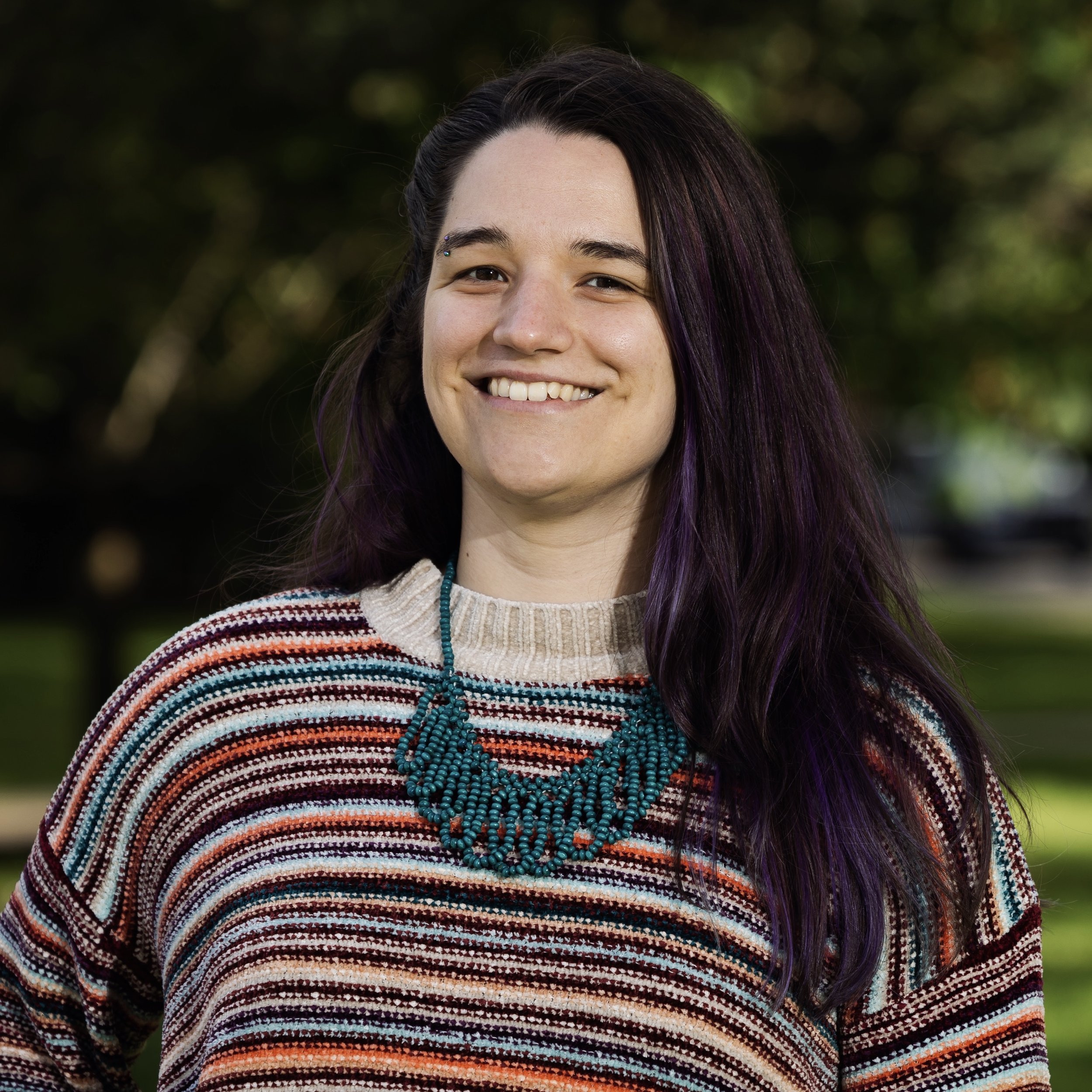Not Just for Kids, Art Therapy is for Adults
Art as a Journey
In the early years of our species, before we wrote, we drew abstractly & we tried to capture the world around us through representational drawings. When we began to draw as children, we first experimented with the idea “What happens if I use this tool on this surface?” and grew to want our drawings to symbolize & reflect our worlds. In art therapy, we can work through these stages again, first by experimenting with the “what ifs” of using art materials, and then learning how to utilize art making as a way to symbolize & reflect our worlds. Engaging with art is an opportunity for us to shift from our product driven world back to a mindset that allows us to learn through processes & reflection. Art therapy can help us shift from an outcome oriented mindset & teach us to enjoy the journey. It can be an opportunity to reconnect with earlier developmental stages in our lives or on an even broader level, as a species.
But I Can’t Draw
Art therapy is not necessarily about becoming an artist or learning to become an artist. As an art therapist, I tend to integrate my teaching skills when clients are unaware how to use a material or express interest in wanting to learn more about how to develop a skill. Yes, you can draw stick figures in art therapy if you want to. No, you don’t need to know how to draw.
Possible materials in art therapy:
Clay
Paint (Ex. watercolor, acrylic)
Fiber arts
Nature materials
You could even participate in art therapy without ever drawing anything because each art therapy experience is personalized. It’s possible to create in art therapy if someone once told you that you couldn’t draw or laughed at something you drew. Many of us judge ourselves, our creations, compare ourselves to others, or are disappointed when our results don’t meet our own expectations. Many adults have memories of an art teacher or other adult “ruining art” for them or remember comparing themselves to someone who was quite talented. This causes some adults to develop a fixed mindset about creating, that creating art has to only happen if we have a certain skill or talent & if you don’t have that talent, you shouldn’t create.
Misconceptions about art therapy:
It’s reserved for children, “creative types,” or those who have a natural “talent” for making art
Is focused on the outcome or making something worth displaying or selling
Art has to look “good,” based on our own internalized ideas about aesthetics of what “makes art ‘good’ or ‘bad.’”
Shifting from Product to Process
Photo by Jonathan Borba on Unsplash
Making art as an adult can feel very challenging, since many adults have adapted a fixed mindset about should or shouldn’t be considered art. In art therapy, we are typically not creating something with the purpose of displaying, sharing, or selling the result. This contradicts what many of us have been taught to believe about the purpose of art. It even contradicts society's product driven mindset, that it isn’t a valuable way to spend our time unless there is a measurable result. When our value is connected to what we produce, it takes away from our ability to find joy in simple pleasures & being okay with making things that are not perfect. When we create something that, from our perspective, isn’t perfect, it’s easy to judge the time spent on that creation as a waste of time.
There are certainly non-negotiables with boundaries, but engaging in art therapy is a relatively risk free way for us to experiment with pushing our comfort levels & adapting a growth mindset. Some people may find this freeing, allowing them to take risks in art while reducing risk taking behavior in other areas of their life. While creating art in an art therapy setting doesn’t have to be about learning how to draw or how to become an artist, it can still feel incredibly vulnerable to create something when we haven’t practiced this skill in years. Similarly, trying to ride a bike after years or decades of not biking is going to feel like a new skill all over again. Just because we haven’t done something since childhood does not mean that it is any less valuable or that it doesn’t have potential to serve a purpose in our lives.
Reaching Goals Through Art Therapy
How might art therapy help you reach your goals? Let’s say you are struggling in your life to let go of control in situations & this is causing you to feel anxious & worried about when things don’t go according to plan. This could be explored through an experiential in art therapy with watercolor. We might start by getting the paper extremely wet & then painting on top of the wet paper. This will cause the watercolor to spread out, it won’t stay where you place it & it will move around the paper. What do you think that would be like, to have an intention of where you want your paint to go & the paint does not follow your expectations? This is something that can be explored through both the process of creating & reflecting on that process.
Integrating Experiences Through Art Therapy
Identity mandala by Marte
A former client was processing his traumas and hit a roadblock with traditional talk therapy. He wasn’t super open to the idea of art therapy, but I began to send him home with articles about how art therapy can be used to help process trauma. I prompted him to create an “identity mandala,” since he was struggling to understand how his identity felt changed after his traumatic experiences. He worked through some challenges while creating, including not knowing what symbols to use & debating how helpful creating this mandala would actually be. But as he worked towards completion, he began to identify symbols of strength that helped shape his sense of self. He shared with me after we discussed his process & product, that he had not expected to find the experiential meaningful. Creating his mandala allowed him to integrate experiences from before & after his trauma, allowing him to find space to begin to learn more about who he is without allowing his trauma to define him.
Working with an Art Therapist
What sets making art, adult coloring books, or other types of creative hobbies apart from art therapy & working with an art therapist? Doing any of these practices are certainly wonderful ways to spend your time, they will enrich your life & be a helpful form of stress relief. According to the American Association of Art Therapy, art therapy is facilitated by a masters-level clinician who is trained in the intersections of kinesthetic, sensory, perceptual, & symbolic interactions between art materials & mental health. Art therapists utilize their training in “art making, creative processes, psychological theory, & knowledge of human experiences'' to help their clients reach their goals.
Clients who are hesitant about art therapy are often surprised how truths about themselves emerge through the art, especially when they didn’t plan for this. Creating allows our subconscious mind to contribute its thoughts & ideas, which can emerge through line, shape, form, symbols, & relationships between elements of art in the product. When we talk about the art together, it allows some of these subconscious thoughts to become more apparent & that can allow us to gain new perspectives.
Unique for Each Client
As far as my own individual perspective on how I practice art therapy, I like to meet my clients in their comfort zones & learn from them what their past experiences & biases about art making have been. I ask folks how they want art integrated into their session; Do they want to talk while they work? Do they prefer to work in silence? I enjoy creating alongside my clients so that it feels like a collaborative, studio environment & helping my clients navigate through different art media. Creating art allows for clients to have visual representations of their sessions, it can offer opportunities for clients to look back on their creations & see their own growth. The art we make can represent not only the themes in the art, but serves as a literal object to represent what was processed in that particular session.
How do you decide if working with an art therapist is right for you? If traditional forms of therapy haven’t worked for you, there is a good chance that approaching therapy from an integrative approach might benefit you. Art therapy is a perfect example of an integrative model because it engages the 5 senses to connect you to your body, mind & spirit. If you have an open mind & willingness to experiment with new things, art therapy might be right for you. A range of mental health challenges from ADHD to PTSD benefit from non-traditional approaches in therapy. In our daily life, we are conditioned to explain ourselves through our words & art therapy offers an opportunity to view our challenges from a new perspective.
My Journey to Art Therapy
Collage materials can come from anywhere: books, magazines, pictures
Collage was my entry point to using art as therapy when I was in high school. I found it easy to connect to imagery & create journals that helped me process my emotions. My path started in art education, but there was always something missing for me in the education world where I had to expect all students to make a similar project & grade them based on standards. I found my way to art therapy while teaching high school art & through my clinical experiences, grew to love working with adults. I love watching clients be surprised at insights they gain from art therapy & helping them to gain confidence in using art to help them express themselves.
In my own life, I continue to process my experiences through art. It’s nice to have something to turn to when I feel words can’t capture what I’m going through or as a space to let go of my own burdens. For me, art therapy is a way for me to take care of my mind, body, & spirit. I hope that for my clients, art therapy helps them learn something new about how to care for their own minds, bodies, & spirits.
Marte Marini, LLPC & ATR-P, is a Counselor and Art Therapist at Reset Brain and Body. They received a BFA in Art Education, with a Drawing minor from Kendall College of Art & Design, and their MA in Clinical Mental Health with a Specialization in Art Therapy from Wayne State University. Marte enjoys working with those that are curious about learning more about themselves, and are willing to explore how creative processes might lend a fresh perspective to their healing and growth.






